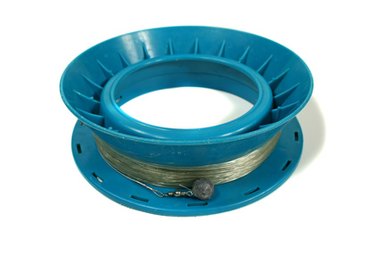
Sinker molds are used to produce sinkers that will weigh down fishing line under water. Although sinkers and sinker molds are available for purchase, a frugal and handy angler can make any of a variety of homemade sinker molds to fashion his or her own lead sinkers.
Spoon
Video of the Day
An old spoon is an option to make a flat, oval sinker for freshwater or light saltwater fishing. Pour melted lead into the spoon, controlling the size and weight of the sinker by regulating the amount of lead poured and the size of the spoon. If the sinker sticks to the spoon, wipe the surface with an oily rag. Once the sinker is formed and cold, drill or punch a hole in one end.
Video of the Day
Potato
Take a large potato, cut it in half and then carve a cavity that reflects the desired sinker shape. The potato method is limited to rectangular, pyramid, dipsey, cylindrical and pencil-type sinkers. Cut a small slot in the bottom of the cavity and put a wire eye in it before pouring the lead into the potato. The first few pours will cause a moist potato to sputter and sizzle and eventually the potato will shrivel and become unusable.
Wood
A small chunk of hardwood is another mold option. Drill or carve out a sinker cavity. A wood block and multiple sizes of drills can be used to make a good dipsey sinker mold. As with the potato mold, cut a small slot in the bottom of the cavity to make a wire eye.
Plaster
Plaster of Paris or water putty can be used to make ball, bank or trolling weights. Use a cardboard box or make a wooden frame for the size desired. Do not use a lead sinker itself to make the mold. It is too heavy and will sink in wet plaster. Instead, carve a sinker pattern from soft wood, soap or wax. Push the pattern halfway into the plaster, grease the top of the pattern and then pour the rest of the plaster or putty.